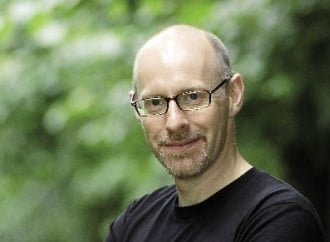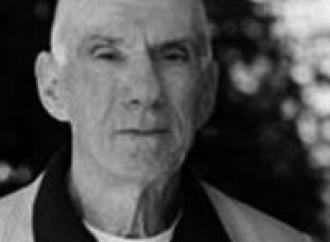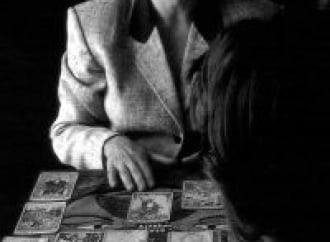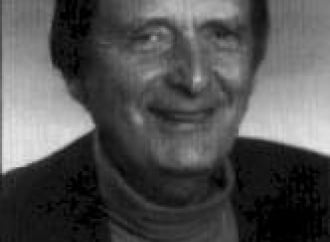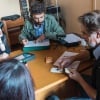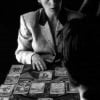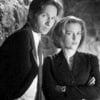Is there a rational explanation for Alla Vinogradova's extraordinary ability to move objects without touching them? A research was conducted and an interesting and counterintuitive explanation was found. However, in the process it was also found that more close cooperation between serious skeptics and parapsychology is needed.
by Massimo Polidoro
For years, psychic research in the USSR, owing to the aura of secrecy that surrounded it, has been regarded as some kind of myth. It was said, for example, that the Russians were far ahead in parapsychological discoveries and that the West had better invest more in the field to avoid a "psi-gap". The sparse information that reached the West hinted to extraordinary faculties being scientifically demonstrated by amazing psychics. During the early 60's, interest in Soviet paranormal claims was first aroused by newspaper articles describing the astonishing abilities of Rosa Kuleshova, a 22-year-old Russian girl who could apparently read print while blindfolded (Time, January 25, 1963; Life, June 12, 1964). However, the loose conditions in which Rosa operated allowed for the possibility of very easy methods of deception being used (Gardner, 1981). In 1968, films of Nina Kulagina moving objects -- apparently with her mind only, -- were shown at the First Moscow International Conference on Parapsychology and were also observed by some Western scientists. Then the general public became aware of the varied work in parapsychology carried out in the USSR when Sheila Ostrander and Lynn Schroeder's Psychic Discoveries Behind the Iron Curtain was published in 1970. This was followed by various other similar publications on the subject (i. e.: Ullman, 1974; Gris and Dick, 1978). Films of Russian psychics at work have now been frequently shown on Western tv shows and in tv documentaries, the most popular ones being those showing apparent PK (psychokinesis) in action. We have, then, Nina Kulagina moving compass needles and light objects, Boris Ermolaev "levitating" small objects and Alla Vinogradova causing round objects to roll about on flat surfaces at will.
As for Nina Kulagina, the conditions under which she operated were far from acceptable from the view of basic scientific standards. Tests were frequently carried out at her own home or in hotel rooms; no tight controls were ever applied, owing to the fact that a demonstration might take several hours of preparation (i.e. concentration by Nina) and even then, there was any guarantee of success. Also, when anyone who has a background in magicians' techniques watches these films, they cannot avoid the feeling that she is using standard conjuring techniques: a magnet hidden on her body to move the compass needle; a thread or a thin hair to move objects across the table; a small mirror concealed in her hand to read signs with numbers and letters being held behind her. Unfortunately, no expert in conjuring techniques was ever present at Kulagina's demonstrations. Boris Ermolaev, a Russian film director, became relatively famous during the 70's for his apparent ability to suspend objects in mid air by concentrating on them. Ermolaev didn't perform on stage, but showed his demonstrations «only to serious scientists of his own choosing or to close friends» (Gris and Dick, 1986). He was tested by, among others, prof. Venyamin Pushkin, who stated that «the experiments were conducted under the strictest controls, and no devices of any kind were used» (Ibid.). However, on a recent World of Discovery documentary titled "Secrets of the Russian Psychics" (1992), Ermolaev's method was finally revealed. He would sit on a chair and then place the objects to be suspended between his knees; unfortunately for him, the lighting conditions when the documentary crew was filming were not those he was probably accustomed to. That's how the tv people were able to spot a fine thread fixed between his knees, and from which he suspended the objects; the whole unmasking procedure was filmed and shown during the documentary. Alla Vinogradova is another story.
A child psychologist and teacher, wife of russian psi-researcher Victor Adamenko, it is said that Alla Vinogradova saw in 1969 a film of Kulagina in action and suspected that she too could move objects without touching them. In fact, after training by Adamenko, she discovered she could really move objects placed on transparent acrylic plastic. Films of her demonstrations were shot in the early 70's and, recently, the already mentioned World of Discovery documentary on Russian psychics included an interesting section on her. Here she was presented as she is today, still demonstrating the same abilities for the camera. She takes such objects as cigarettes, aluminum cigar tubes and pens and put them on a plexiglass plate suspended between two chairs; under these conditions she is able to have them rotate, roll, and move just by having her hand approach -- but never touch -- the objects. The demonstration is quite puzzling. It appears very natural and repeatable, and it seems that the usual tricks (like secretly blowing on the surface to have the object move in response to the air current thus created) were unlikely. Some time ago, I was visiting James Randi in Florida; he had recently returned from Russia, where he had gone for some filming to be included in the Nova documentary about his work, "Secrets of the Psychics" (1993). Randi told me that, while there, the tv production staff had approached Vinogradova, who had agreed to demonstrate her abilities for them on camera. However, she had set the condition that Randi had to be kept away from the room where the filming was to take place. Quite an unkind request, considering that the documentary was dedicated to Randi's investigations. Nonetheless, Randi accepted her veto: this way, she would present her demonstration as she always did, that is, not under controlled conditions. It was, in any case, an opportunity to film her from different angles and to have better video material for study. The segments filmed with Vinogradova where not included in the final documentary due to lack of space. However, Randi had obtained copies of the original unedited footage which he was going to show me. Here, Vinogradova was seen in discussion in Russian with the operators, then walking back and forth on the thick carpet, combing her hair, and rubbing the surface of an acrylic plate placed on top of four reversed wine glasses on a table, with a towel. It was a cold, crisp, winter day. After this preparation, she demonstrated her abilities with various objects: cigarettes, pens, plastic rings, a little wood matrioska, a small hair spray tube and a small drinking glass. All objects moved quite freely, as had been seen in the previous films. The spray tube and the glass -- the heaviest objects -- moved little or only wobbled back and forth as she passed her hand over them. Suddenly, while she was moving a matrioska, a white thread at the edge of the table, under the acrylic plate, was seen to be moving too, following the matrioska. I pointed this out to Randi and he told me that the cameramean, after shooting the film, had reported to him that he had seen the moving thread, but hadn't realized that he had actually zoomed in on it and had caught it on film. Randi himself hadn't yet had a chance to examine the film so he was quite interested, too. «That thread», he told me, «was from the torn end of a cloth-base "duct" tape used to fasten two tiny microphones to the edge of the acrylic. The microphones were there to detect if she was doing any blowing to move the objects. The thread was not placed there purposely; it was just a loose thread. But, of course, it proved to be the indicator needed!».
We discussed the possibility of static electricity being the sole element reponsible for the phenomena. In the World of Discovery documentary, this possibility was mentioned as a solution proposed by skeptics, but it was immediately discarded since Vinogradova had said that she could move objects weighing «up to 200 grams». She claimed that it was impossible to do this using only static electricity. We thought we should try to repeat her performance with an acrylic plate but, owing to other things we were involved with at the time, we didn't have a chance to get around to it before my departure. Once I was back in Italy, I discussed the subject with my collegues Luigi Garlaschelli and Franco Ramaccini of CICAP (the Italian Committee for the Investigation of Claims of the Paranormal) and soon we tested the theory of static electriticy. Ramaccini prepared an acrylic plate and showed us how easy it is to move any kind of round object on top of it, unig only the repelling force of "like" charges of static electricity. Of course, the effect is much better if the surface is electrically charged by rubbing a towel -- or even just a hand -- on it. Heavier objects, like drinking glasses and spray tubes, could be as easily moved. At this point, it became clear that everything shown on Alla Vinogradova's films seem to have a very simple and rational explanation. We then wondered whether others had already discovered this very interesting and counterintuitive phenomenon. No mention of Vinogradova's abilities appeared in the skeptical literature of the paranormal, or in popular science "magic" books, and some of the best known skeptics didn't know much about her. I then got in touch with some of today's leading parapsychologists and was more than pleased to discover that they not only could help with a lot of information on Vinogradova, but that they had already solved the mystery years ago!
Dr. Stanley Krippner, a psychologist at Saybrook Institute in San Francisco and past president of the Parapsychological Association, told me that he had dealt with Vinogradova in his book Human Possibilities (1980), which he kindly sent me. In it he writes that, when he was in Russia, he observed Vinogradova in action with an aluminum tube: «She picked it up and rubbed it for a few seconds - suggesting to me that she was simply producing an electrostatic charge that would cause her hand to repel the tube. As expected, the object moved across the table» (p. 20). Krippner was also able to reproduce the effect once back in the United States. In the book, he quotes a Canadian parapsychologist, A. R. G. Owen, who back in 1975 wrote that «Anyone can produce this effect ... It is entirely due to static electricity» (quoted in: Krippner 1980, p. 46). Dr. Richard Broughton, director of the Rhine Research Center in Durham, North Carolina, explained to me that: «Adamenko had a notion that he could "train" people to produce Kulagina-like effects by starting them out moving objects by static electricity, and then gradually moving them to objects that would not be susceptible to static electricity effects» (1996).
Although these more impressive proposed demonstrations haven't so far been publicly demonstrated by Vinogradova or others, I think there's a lesson to be learned here. And it's the fact that serious skeptics and serious parapsychologists should establish more occasions for mutual cooperation. Parapsychologists shouldn't be generally assumed by skeptics to be more gullible than other researchers (although there have been many examples of such cases), just because they may have a more open attitude toward psi. In fact, some of the best skeptical investigations in early psychical research, for example, were carried out by members of the Society for Psychical Research. More importantly, however, is the fact that today many parapsychologists are quite aware of the pitfalls of experimenting with self-proclaimed psychics, and they either make use of experts in psychic fraud or, like Dr. Richard Wiseman of Perrot-Warrick Research Unit at the University of Hertfordshire, England, they have themselves developed expertise in this field. I hope the era of battle between proponents and critics of parapsychology is over, and that the time has come for a new era of cooperation, where there may be agreement on some basic points. For example, it is in both sides' interest to get rid of superstition and charlatans, and also to examine the claims, rather than simply arguing over them. I am not saying that there may be real psi to be discovered, but that there may be something interesting to be discovered about human psychology.
Massimo Polidoro is Researcher for CICAP (the Italian Committee for the Investigations of Claims of the Paranormal), author of various books dealing with critical examination of paranormal claims and a graduate student in psychology at Padua University, e-mail: [email protected] .
by Massimo Polidoro
Indice |
For years, psychic research in the USSR, owing to the aura of secrecy that surrounded it, has been regarded as some kind of myth. It was said, for example, that the Russians were far ahead in parapsychological discoveries and that the West had better invest more in the field to avoid a "psi-gap". The sparse information that reached the West hinted to extraordinary faculties being scientifically demonstrated by amazing psychics. During the early 60's, interest in Soviet paranormal claims was first aroused by newspaper articles describing the astonishing abilities of Rosa Kuleshova, a 22-year-old Russian girl who could apparently read print while blindfolded (Time, January 25, 1963; Life, June 12, 1964). However, the loose conditions in which Rosa operated allowed for the possibility of very easy methods of deception being used (Gardner, 1981). In 1968, films of Nina Kulagina moving objects -- apparently with her mind only, -- were shown at the First Moscow International Conference on Parapsychology and were also observed by some Western scientists. Then the general public became aware of the varied work in parapsychology carried out in the USSR when Sheila Ostrander and Lynn Schroeder's Psychic Discoveries Behind the Iron Curtain was published in 1970. This was followed by various other similar publications on the subject (i. e.: Ullman, 1974; Gris and Dick, 1978). Films of Russian psychics at work have now been frequently shown on Western tv shows and in tv documentaries, the most popular ones being those showing apparent PK (psychokinesis) in action. We have, then, Nina Kulagina moving compass needles and light objects, Boris Ermolaev "levitating" small objects and Alla Vinogradova causing round objects to roll about on flat surfaces at will.
Russian PK Stars
As for Nina Kulagina, the conditions under which she operated were far from acceptable from the view of basic scientific standards. Tests were frequently carried out at her own home or in hotel rooms; no tight controls were ever applied, owing to the fact that a demonstration might take several hours of preparation (i.e. concentration by Nina) and even then, there was any guarantee of success. Also, when anyone who has a background in magicians' techniques watches these films, they cannot avoid the feeling that she is using standard conjuring techniques: a magnet hidden on her body to move the compass needle; a thread or a thin hair to move objects across the table; a small mirror concealed in her hand to read signs with numbers and letters being held behind her. Unfortunately, no expert in conjuring techniques was ever present at Kulagina's demonstrations. Boris Ermolaev, a Russian film director, became relatively famous during the 70's for his apparent ability to suspend objects in mid air by concentrating on them. Ermolaev didn't perform on stage, but showed his demonstrations «only to serious scientists of his own choosing or to close friends» (Gris and Dick, 1986). He was tested by, among others, prof. Venyamin Pushkin, who stated that «the experiments were conducted under the strictest controls, and no devices of any kind were used» (Ibid.). However, on a recent World of Discovery documentary titled "Secrets of the Russian Psychics" (1992), Ermolaev's method was finally revealed. He would sit on a chair and then place the objects to be suspended between his knees; unfortunately for him, the lighting conditions when the documentary crew was filming were not those he was probably accustomed to. That's how the tv people were able to spot a fine thread fixed between his knees, and from which he suspended the objects; the whole unmasking procedure was filmed and shown during the documentary. Alla Vinogradova is another story.
Vinogradova's Moving Tubes
A child psychologist and teacher, wife of russian psi-researcher Victor Adamenko, it is said that Alla Vinogradova saw in 1969 a film of Kulagina in action and suspected that she too could move objects without touching them. In fact, after training by Adamenko, she discovered she could really move objects placed on transparent acrylic plastic. Films of her demonstrations were shot in the early 70's and, recently, the already mentioned World of Discovery documentary on Russian psychics included an interesting section on her. Here she was presented as she is today, still demonstrating the same abilities for the camera. She takes such objects as cigarettes, aluminum cigar tubes and pens and put them on a plexiglass plate suspended between two chairs; under these conditions she is able to have them rotate, roll, and move just by having her hand approach -- but never touch -- the objects. The demonstration is quite puzzling. It appears very natural and repeatable, and it seems that the usual tricks (like secretly blowing on the surface to have the object move in response to the air current thus created) were unlikely. Some time ago, I was visiting James Randi in Florida; he had recently returned from Russia, where he had gone for some filming to be included in the Nova documentary about his work, "Secrets of the Psychics" (1993). Randi told me that, while there, the tv production staff had approached Vinogradova, who had agreed to demonstrate her abilities for them on camera. However, she had set the condition that Randi had to be kept away from the room where the filming was to take place. Quite an unkind request, considering that the documentary was dedicated to Randi's investigations. Nonetheless, Randi accepted her veto: this way, she would present her demonstration as she always did, that is, not under controlled conditions. It was, in any case, an opportunity to film her from different angles and to have better video material for study. The segments filmed with Vinogradova where not included in the final documentary due to lack of space. However, Randi had obtained copies of the original unedited footage which he was going to show me. Here, Vinogradova was seen in discussion in Russian with the operators, then walking back and forth on the thick carpet, combing her hair, and rubbing the surface of an acrylic plate placed on top of four reversed wine glasses on a table, with a towel. It was a cold, crisp, winter day. After this preparation, she demonstrated her abilities with various objects: cigarettes, pens, plastic rings, a little wood matrioska, a small hair spray tube and a small drinking glass. All objects moved quite freely, as had been seen in the previous films. The spray tube and the glass -- the heaviest objects -- moved little or only wobbled back and forth as she passed her hand over them. Suddenly, while she was moving a matrioska, a white thread at the edge of the table, under the acrylic plate, was seen to be moving too, following the matrioska. I pointed this out to Randi and he told me that the cameramean, after shooting the film, had reported to him that he had seen the moving thread, but hadn't realized that he had actually zoomed in on it and had caught it on film. Randi himself hadn't yet had a chance to examine the film so he was quite interested, too. «That thread», he told me, «was from the torn end of a cloth-base "duct" tape used to fasten two tiny microphones to the edge of the acrylic. The microphones were there to detect if she was doing any blowing to move the objects. The thread was not placed there purposely; it was just a loose thread. But, of course, it proved to be the indicator needed!».
A Neglected Explanation?
We discussed the possibility of static electricity being the sole element reponsible for the phenomena. In the World of Discovery documentary, this possibility was mentioned as a solution proposed by skeptics, but it was immediately discarded since Vinogradova had said that she could move objects weighing «up to 200 grams». She claimed that it was impossible to do this using only static electricity. We thought we should try to repeat her performance with an acrylic plate but, owing to other things we were involved with at the time, we didn't have a chance to get around to it before my departure. Once I was back in Italy, I discussed the subject with my collegues Luigi Garlaschelli and Franco Ramaccini of CICAP (the Italian Committee for the Investigation of Claims of the Paranormal) and soon we tested the theory of static electriticy. Ramaccini prepared an acrylic plate and showed us how easy it is to move any kind of round object on top of it, unig only the repelling force of "like" charges of static electricity. Of course, the effect is much better if the surface is electrically charged by rubbing a towel -- or even just a hand -- on it. Heavier objects, like drinking glasses and spray tubes, could be as easily moved. At this point, it became clear that everything shown on Alla Vinogradova's films seem to have a very simple and rational explanation. We then wondered whether others had already discovered this very interesting and counterintuitive phenomenon. No mention of Vinogradova's abilities appeared in the skeptical literature of the paranormal, or in popular science "magic" books, and some of the best known skeptics didn't know much about her. I then got in touch with some of today's leading parapsychologists and was more than pleased to discover that they not only could help with a lot of information on Vinogradova, but that they had already solved the mystery years ago!
The Help of Parapsychologists
Dr. Stanley Krippner, a psychologist at Saybrook Institute in San Francisco and past president of the Parapsychological Association, told me that he had dealt with Vinogradova in his book Human Possibilities (1980), which he kindly sent me. In it he writes that, when he was in Russia, he observed Vinogradova in action with an aluminum tube: «She picked it up and rubbed it for a few seconds - suggesting to me that she was simply producing an electrostatic charge that would cause her hand to repel the tube. As expected, the object moved across the table» (p. 20). Krippner was also able to reproduce the effect once back in the United States. In the book, he quotes a Canadian parapsychologist, A. R. G. Owen, who back in 1975 wrote that «Anyone can produce this effect ... It is entirely due to static electricity» (quoted in: Krippner 1980, p. 46). Dr. Richard Broughton, director of the Rhine Research Center in Durham, North Carolina, explained to me that: «Adamenko had a notion that he could "train" people to produce Kulagina-like effects by starting them out moving objects by static electricity, and then gradually moving them to objects that would not be susceptible to static electricity effects» (1996).
A Lesson to be Learned
Although these more impressive proposed demonstrations haven't so far been publicly demonstrated by Vinogradova or others, I think there's a lesson to be learned here. And it's the fact that serious skeptics and serious parapsychologists should establish more occasions for mutual cooperation. Parapsychologists shouldn't be generally assumed by skeptics to be more gullible than other researchers (although there have been many examples of such cases), just because they may have a more open attitude toward psi. In fact, some of the best skeptical investigations in early psychical research, for example, were carried out by members of the Society for Psychical Research. More importantly, however, is the fact that today many parapsychologists are quite aware of the pitfalls of experimenting with self-proclaimed psychics, and they either make use of experts in psychic fraud or, like Dr. Richard Wiseman of Perrot-Warrick Research Unit at the University of Hertfordshire, England, they have themselves developed expertise in this field. I hope the era of battle between proponents and critics of parapsychology is over, and that the time has come for a new era of cooperation, where there may be agreement on some basic points. For example, it is in both sides' interest to get rid of superstition and charlatans, and also to examine the claims, rather than simply arguing over them. I am not saying that there may be real psi to be discovered, but that there may be something interesting to be discovered about human psychology.
Massimo Polidoro is Researcher for CICAP (the Italian Committee for the Investigations of Claims of the Paranormal), author of various books dealing with critical examination of paranormal claims and a graduate student in psychology at Padua University, e-mail: [email protected] .
References
- Adamenko, V. G. 1972. Controlled movement of objects in bio-electrical fields. Journal of Paraphysics 6, 180-226.
- Adamenko, V. G. 1972. Objects moved at a distance by means of a controlled bioelectric field. In Abstracts, Twentieth International Congress of Psychology. Tokyo: International Congress of Psychology, 1972.
- Broughton, R. 1996. Personal comunication to the author.
- Ebon, Martin. 1985-86. Psychic Studies: The Soviet Dilemma. Skeptical Inquirer 10(2): 144- 152.
- Gardner, M. 1981. Dermo-optical perception: A peek down the nose. In Science: Good, Bad and Bogus. Buffalo, NY: Prometheus Books.
- Gris, H. and William Dick. 1978. The New Soviet Psychic Discoveries. Englewood Cliffs, NJ: Prentice-Hall.
- Gris, H. and William Dick. 1986. Soviet Psychic Ermolaev... Master of Mind over Matter. Fate, April 1986.
- Herbert, B. 1972. Alla Vinogradova: Demostration in Moscow. Journal of Paraphysics 6, 191-196.
- Herbert, Benson (1972). Electrical PK. Parapsychology Review, 3(5), 18-19.
- Krippner, S. 1980. Human Possibilities. NY: Anchor Press.
- Maigret, P. de. 1976. PK Training in Russia. Fate, May 1976.
- Maire III, L. F. and J. D. LaMothe. 1975. Defense Intelligence Agency report DST-1810S- 387-75: Soviet and Czechoslovakian Parapsychology Research (U) (September 1975) prepared for the U.S. Army Medical Intelligence and Information Agency, Office of the Surgeon General.
- Ostrander, S. and L. Schroeder. 1970. Psychic Discoveries Behind the Iron Curtain. Englewood Cliffs, NJ: Prentice-Hall.
- Owen, A. R. G. 1975. Psychic Mysteries of the North. New York: Harper & Row.
- Ullman, M. 1974. PK in the Soviet Union. In W. G. Roll, R. L. Morris, and J. D. Morris (eds.), Research in Parapsychology, 1973.
- Metuchen, N. J.: Scarecrow Press. I would like to thank the following persons for their kind help and cooperation with this research: Carlos S. Alvarado, Richard S. Broughton, Luigi Garlaschelli, Stanley Krippner, Franco Ramaccini, James Randi and Nancy Zingrone. Thanks also to the following persons for their useful suggestions: Eberhard Bauer, John Beloff, Susan Blackmore, Ray Hyman, Lewis Jones, Robert L. Morris and Marcello Truzzi.


